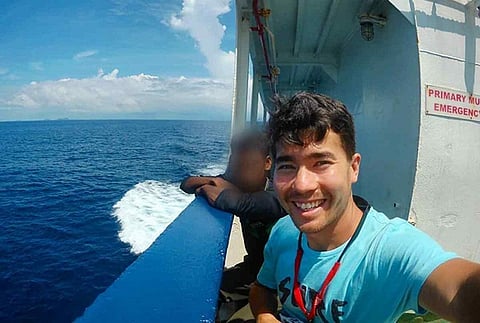

Since the death of American missionary John Allen Chau at the North Sentinel Island in Andaman, there has been much debate about whether the inhabitants of the island and the people believed to have killed John – the Sentinelese tribe – should be integrated into the mainstream. The tribe, which has been living the island, completely cut off from the outside world for up to 60,000 years, has a history of violently rejecting any contact with the outside world. They are also protected under the Andaman and Nicobar Protection of Aboriginal Tribes (Regulation) Act.
This isolation has also meant that the Sentinelese have not developed immunity to the common infections as well as deadly diseases of the modern world. And experts worry that the very fact that 26-year-old John went to their island may have exposed the Sentinelese to germs and infections they have no defense against.
Sophie Grig, a senior researcher with Survival International, an organisation which champions tribals’ rights globally, tells TNM that Sentinelese being exposed to the dangerous infections is a very serious concern right now. But is there any way of finding out, given that the Sentinelese reject all outside contact? “The government has a policy of ‘hands off, eyes on’ which means that they do occasionally monitor the tribe, by binoculars from the coast to be sure that they are healthy and no epidemic has befallen them etc. They will presumably be monitoring more regularly than usual,” she said.
In fact, Andaman has a history of losing its indigenous tribes to attempts of mainstreaming and civilization, as a result of which the tribes become plagued by social evils, substance abuse, exploitation and epidemics.
Andamanese tribes endangered, driven to extinction
The most poignant and significant example of the Andamanese tribes being endangered due to self-righteous attempts at ‘civilisation’ is the fate that met the Great Andamanese after the British’s colonization during the 19th century.
According to Survival International, the Great Andamanese were actually made of 10 distinct tribes but were clubbed under one umbrella category by the colonisers. The ten tribes, including Jeru, Bea, Bo, Khora and Pucikwar, were numbered between 200 and 700. They each had their own language too.
Before the British invasion in 1858, a population of about 5,000 populated the islands. However, the fatalities resulting from the tribes’ attempts to protect their territories against the British wiped out significant numbers. Thousands fell victim to epidemics of measles, influenza and syphilis introduced by the colonizing parties.
Then in 1860s, British set up an ‘Andaman Home’ where captured Great Andamanese were housed. "Hundreds of the tribe died from disease and abuse in the home, and of 150 babies born there, none survived beyond the age of two," Survival International notes.
The fate that awaited the remaining tribal population was not bright either. In 1970, the Indian administration moved the remaining Great Andamanese to the Strait Island, 53 kilometres off the coast of Port Blair, where they remain dependent on the government for survival. Alcohol abuse and illnesses like tuberculosis are rife.
Once in thousands and thriving, now only about 50 of the Great Andamanese people remain.
Diverse cultures and languages have been lost as a result. Linguist Anvita Abbi, a professor at the School of Languages, Jawaharlal Nehru University, Delhi noted that the language of the Great Andamanese is at the risk of dying out. While the language had 10 dialects in the 18th century, now, of the 50 odd people on Strait Island, only about eight speak the language in bits and pieces.
"A corrupted form of Hindi called Andamanese Hindi has replaced the original language and hence even the native speakers have to recollect words and their meanings," Avnita said. While she has compiled 5,000 words of the language which are being converted into a trilingual dictionary with translations in English and Hindi, the loss is tremendous.
In a poignant account, Avnita described the loneliness of Boa Sr, the last living member of the Bo tribe, who passed away in 2010 at the age of 85. The oldest of the Great Andamanese when she died and the last surviving speaker of Bo language, she could not converse with anyone else. "At times, she felt very isolated and lonely as she had no one to talk to in her own language,” Avnita noted.
Even the Jarawa, a tribe that began to interact at ease with outsiders by the 1990s, have not really received the so-called ‘fruits’ of civilization in the large sense. The Jarawas have been affected by measles, fallen prey to addictions like alcohol and become victims of exploitation.
There are safaris which allow tourists to catch glimpses of the Jarawa tribe in their reserve. It is not uncommon for a spectacle to be made out of them – tourists have been documented pointing at them, clicking photos and even throwing food at them.
Anthropologist Triloknath Pandit, credited with establishing friendly contact with the Jarawas also made similar observations. He told The New York Times in 2017, “They have been exposed to a modern way of life they cannot sustain. They have learned to eat rice and sugar. We have turned a free people into beggars.”